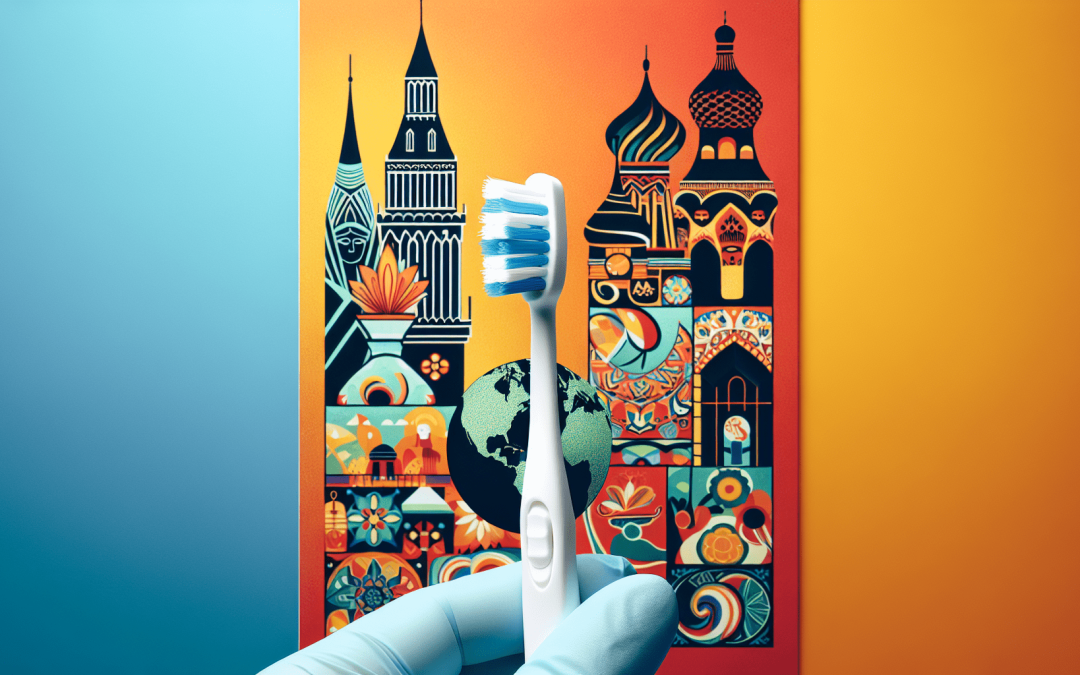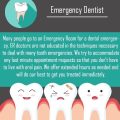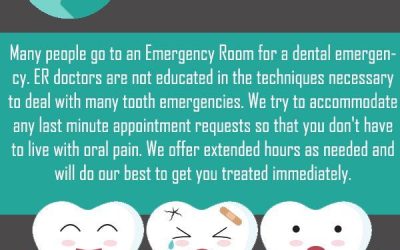Picture this: you’re exploring a new country, immersing yourself in its culture and indulging in its delicious cuisine. But suddenly, a sharp pain shoots through your tooth, stealing your attention away from the breathtaking sights around you. Panic sets in as you realize you’re in a foreign land, unsure of what to do. Don’t worry, we’ve got you covered. In this article, we’ll discuss what to do if you find yourself in the unfortunate situation of having a dental emergency while traveling. So sit back, relax, and let us help put your mind at ease.
Prepare in advance
Traveling can be an exciting and enriching experience, but it’s essential to be prepared for any unforeseen circumstances, including dental emergencies. By taking a few simple steps before your trip, you can minimize the stress and potential pain of a dental emergency.
Research dental providers at your destination
One of the first things you should do before traveling is to research dental providers at your destination. Look for reputable clinics or dentists who can provide emergency dental care if needed. Reading reviews and checking their qualifications will give you an idea of their expertise and reliability.
Save emergency contact numbers
It’s crucial to have emergency contact numbers readily available in case of a dental emergency. Save the contact information of local dental clinics, as well as the number of your dental insurance provider. This way, you’ll have the necessary information at hand, allowing you to act promptly in case of an emergency.
Carry your dental insurance information
Before traveling, make sure to carry your dental insurance information with you. If you have dental insurance, familiarize yourself with the coverage details and know what to expect in terms of reimbursement for emergency dental care. Having your insurance information readily available will streamline the process if you need to seek dental treatment during your trip.
Pack a dental emergency kit
Creating a dental emergency kit can provide peace of mind while traveling. Include items such as mouthwash, dental floss, a small mirror, cotton balls, and temporary dental repair material. These items can help manage minor dental issues until you can seek professional care.
Immediate actions
If you find yourself facing a dental emergency while traveling, it’s essential to take immediate actions to alleviate discomfort and minimize further damage.
Assess the severity of the dental emergency
The first step in managing a dental emergency is to assess its severity. Determine whether it’s a minor issue that can wait until you return home or a more urgent situation requiring immediate attention. If you’re unsure, it’s always best to err on the side of caution and seek professional advice.
Clean the affected area
Keeping the affected area clean is crucial to prevent infection and further complications. Gently rinse your mouth with warm saltwater to remove any debris or bacteria. Be careful not to agitate the injury or cause additional pain while doing so.
Control bleeding
If you’re experiencing bleeding due to a dental emergency, it’s essential to control it as quickly as possible. Apply gentle pressure to the affected area using a clean cloth or sterile gauze. This will help stem the bleeding until you can receive proper dental care.
Manage pain and swelling
Dental emergencies often come with pain and swelling, which can be quite uncomfortable. Over-the-counter pain relievers can offer temporary relief until you can visit a dentist. Applying an ice pack to the affected area can also help reduce swelling and alleviate discomfort.
Seeking dental care
Once you’ve taken immediate actions to address the initial symptoms of a dental emergency, it’s time to seek professional dental care.
Contact your dental insurance provider
If you have dental insurance, it’s advisable to contact your provider as soon as possible. Inquire about the steps you need to take and understand the coverage for emergency dental treatment while you’re traveling. Your insurance provider can guide you on where to seek care and provide you with a list of in-network dentists at your destination.
Visit a local dentist
When facing a dental emergency abroad, it’s best to see a local dentist who can promptly assess and treat your condition. Local dentists are familiar with the common dental issues of the region and can provide the necessary care. Ask for recommendations from locals, your hotel staff, or even your insurance provider to find a trusted dentist.
Ask for recommendations
If you’re unsure where to find a reputable dentist at your destination, don’t hesitate to ask for recommendations. Locals and other travelers can provide valuable insights and recommendations based on their own experiences. Online forums or social media groups dedicated to travelers or expatriates in the area can also be a helpful resource.
Consider language barriers
When seeking dental care in a foreign country, language barriers can become a challenge. It’s important to communicate your symptoms and concerns effectively, so consider learning basic dental terms in the local language. Additionally, utilizing translation apps or phrasebooks can assist in bridging the communication gap. If possible, bring along a bilingual companion who can help translate for you during your dental visit.
Common dental emergencies
Dental emergencies can range from mild discomfort to severe trauma. Understanding the most common dental emergencies can help you identify and address them appropriately.
Toothache
A toothache is a common dental issue that can occur unexpectedly while traveling. It can be caused by a variety of factors, such as tooth decay, gum disease, or sensitivity. If you experience a toothache, rinse your mouth with warm saltwater and use over-the-counter pain relievers for temporary relief. Schedule an appointment with a dentist to determine and address the underlying cause of the toothache.
Dental trauma
Accidents happen, and dental trauma can result from falls, sports injuries, or other unforeseen events. If you’ve experienced dental trauma, assess the severity of the injury. For a knocked-out tooth, refer to the specific section below. For other dental injuries, such as chipped or cracked teeth, save any broken fragments and reach out to a dentist as soon as possible for evaluation and treatment.
Lost filling or crown
Dental fillings and crowns can sometimes come loose, especially when exposed to hard or sticky foods. If a filling or crown falls out, clean the affected tooth gently and save the restoration, if possible. Apply temporary dental repair material to protect the tooth until you can see a dentist for a permanent solution.
Broken or cracked tooth
A broken or cracked tooth can be incredibly painful and requires immediate attention from a dentist. Save any broken fragments that you can find and rinse your mouth with warm water. Apply a cold compress to the outside of your cheek to reduce swelling, and seek professional dental care as soon as possible.
Abscess or infection
An abscess or infection is a serious dental issue that requires prompt treatment. Symptoms may include severe toothache, swelling, fever, and a foul taste or odor in your mouth. If you suspect an abscess or infection, contact a dentist immediately, as these conditions can progress rapidly if left untreated.
Preventing dental emergencies
While it may be impossible to eliminate the risk of dental emergencies completely, there are steps you can take to minimize your chances of experiencing one while traveling.
Maintain good oral hygiene
Practicing good oral hygiene is essential for preventing dental emergencies. Brush your teeth at least twice a day, floss daily, and use mouthwash regularly. Good oral hygiene helps remove plaque and prevent dental issues such as tooth decay and gum disease.
Regular dental check-ups
Before embarking on your journey, consider scheduling a routine dental check-up. Your dentist will identify any potential issues that may require attention before you travel. Addressing these problems early on can help prevent them from becoming dental emergencies while you’re away.
Wear protective gear during physical activities
If you plan to engage in physical activities such as sports or adventure sports while traveling, it’s crucial to wear protective gear. Mouthguards can provide protection for your teeth and jaws, reducing the risk of dental injuries.
Avoid chewing on hard objects
Chewing on ice, pens, or other hard objects can lead to dental emergencies, such as cracked or broken teeth. Be mindful of what you put in your mouth and avoid habits that can pose a risk to your oral health.
Travel insurance coverage
Travel insurance can provide coverage for various unexpected situations, including dental emergencies. It’s crucial to understand the extent of your coverage and how to navigate the reimbursement process.
Check if dental emergencies are covered
Before your trip, review the terms of your travel insurance policy to ascertain whether dental emergencies are covered. Some policies may include coverage for emergency dental treatment, while others may require you to add dental coverage as an additional option.
Know the reimbursement process
Familiarize yourself with the reimbursement process outlined in your travel insurance policy. Understand the documentation required to support your claim, such as receipts and invoices for dental treatment. Keep copies of all relevant documents and submit your claim promptly upon returning home.
Keep receipts and documentation
In the event of a dental emergency, it’s essential to keep copies of all receipts and documentation related to your treatment. These records will be necessary when filing a claim with your travel insurance provider. Ensure that you retain clear and detailed documentation of the services received and the associated costs.
Managing dental pain
Dental emergencies often come with significant pain and discomfort. While seeking professional dental care is crucial, there are some temporary measures you can take to manage dental pain while traveling.
Over-the-counter pain relievers
Over-the-counter pain relievers can bring temporary relief for dental pain. Carry a small supply of pain medication, such as ibuprofen or acetaminophen, to manage discomfort until you can see a dentist.
Using an ice pack
Applying an ice pack to the outside of your cheek can help reduce swelling and alleviate pain caused by dental emergencies. Wrap the ice pack in a clean cloth or towel before applying it to your face.
Rinsing with warm saltwater
Rinsing your mouth with warm saltwater can provide temporary relief for dental pain and reduce inflammation. Dissolve half a teaspoon of salt in eight ounces of warm water, swish it around your mouth for about 30 seconds, and then spit it out. Repeat this process several times a day to help alleviate discomfort.
Handling a knocked-out tooth
A knocked-out tooth is a serious dental emergency that requires immediate attention. It’s essential to handle the situation correctly to maximize the chances of successfully reinserting the tooth.
Find the tooth and handle it carefully
If you’ve had a tooth knocked out, try to find it immediately. Handle the tooth by the crown (the chewing surface) and avoid touching the root. Touching the root can damage the delicate tissues necessary for successful reattachment.
Rinse the tooth with milk or saline solution
If the tooth is dirty, gently rinse it with milk or a saline solution. Avoid using water or wiping it with a cloth, as this can damage the tooth’s surface and reduce the chances of successful reinsertion.
Try to reinsert the tooth gently
If you’re comfortable doing so, try to reinsert the tooth back into its socket. Ensure that it is facing the correct way and push it in gently, using slight pressure. Once the tooth is in place, bite down softly to hold it in position.
If unable to reinsert, keep the tooth moist
If you’re unable to reinsert the tooth or it’s facing complications, it’s essential to keep it moist. Place the tooth in a container of milk, saliva, or a saline solution to prevent it from drying out. Keeping the tooth moist will increase the chances of successful reattachment when you receive professional dental care.
Dealing with a broken tooth
A broken tooth can cause pain and discomfort, and it requires immediate attention from a dentist. Taking the right steps can help preserve the tooth and minimize further damage.
Save any broken tooth fragments
If you’ve broken a tooth, try to save any broken fragments. Gather all the pieces you can find and keep them in a clean container. These fragments may be used by the dentist to restore and repair your tooth.
Rinse mouth with warm water
After a tooth breaks, rinse your mouth with warm water to remove any debris or blood. Gently swish the water around the mouth and spit it out to ensure the area is clean. This step helps to minimize the risk of infection before you can receive professional dental care.
Apply a cold compress to reduce swelling
To manage swelling caused by a broken tooth, apply a cold compress or ice pack to the outside of your cheek. The cold temperature can help reduce inflammation and minimize any pain or discomfort you may be experiencing.
Visit a dentist as soon as possible
A broken tooth requires professional care, so it’s crucial to schedule a dental appointment as soon as possible. The dentist will assess the severity of the break and recommend an appropriate treatment plan to restore the tooth’s strength and appearance.
Language barriers
Traveling to a foreign country comes with the potential challenge of language barriers, which can make seeking dental care more difficult. However, there are ways to overcome these obstacles and ensure effective communication with dental professionals.
Learn basic dental terms in the local language
Before traveling, take the time to familiarize yourself with basic dental terms in the local language. Knowing how to express common symptoms or concerns can facilitate communication with dentists and increase the chances of receiving appropriate care.
Use translation apps or phrasebooks
Translation apps or phrasebooks can be incredibly helpful when seeking dental care in a foreign country. These tools can assist in translating your symptoms, questions, and concerns, bridging the language gap between you and the dentist.
Bring along a bilingual companion if possible
If you anticipate potential language barriers, consider bringing along a bilingual companion who can help translate during your dental visit. Having someone who can effectively communicate with the dentist will ensure that your concerns are understood and addressed properly.
In conclusion, dental emergencies can happen at any time, even while traveling. By preparing in advance, taking immediate actions, seeking professional care, and knowing how to manage pain and injuries, you can navigate dental emergencies with confidence. Remember to keep your dental insurance information readily available, research dental providers at your destination, and take the necessary steps to prevent dental emergencies while traveling. With proper preparation and knowledge, you can ensure that a dental emergency doesn’t dampen your travel experience.












